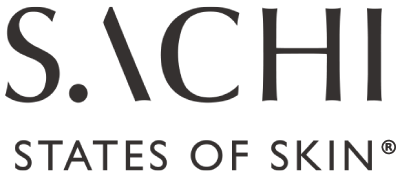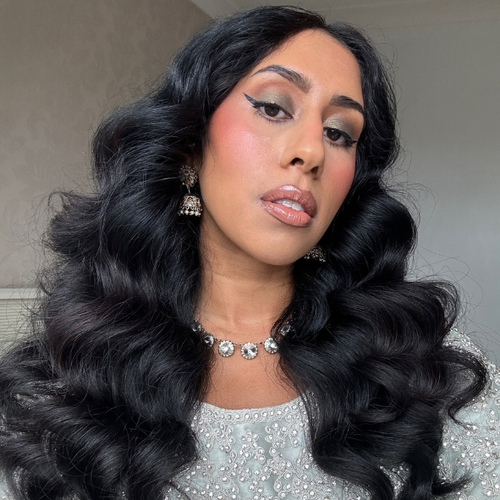If you've searched for solutions to dark spots or melasma, you've likely encountered hydroquinone; it’s a popular-skin lightening agent that also has sparked controversy due to widespread restrictions and bans around the world. At the same time, these restrictions have sparked innovations in safe alternatives like hexylresorcinol. At Sachi Skin, we prioritize safe, science-backed ingredients, which is why our formulations harness hexylresorcinol's power without compromising your skin's health.
What Is Hydroquinone?
Hydroquinone is a synthetic compound that inhibits tyrosinase, an enzyme critical in melanin production. Some refer to it as effectively "bleaching" the skin. Available in concentrations from 2% (previously over-the-counter) to 4% (prescription only), it’s typically used to treat:
- Melasma (hormonal darkening)
- Post-inflammatory hyperpigmentation
- Age spots and sun spots
- Freckles and uneven skin tone
While highly effective, hydroquinone's popularity has been overshadowed by growing safety concerns.
The Growing Concerns Around Hydroquinone
Regulatory Status:
- United States: FDA banned all over-the-counter hydroquinone products in September 2020 under the CARES Act; now prescription-only
- European Union: Completely banned in cosmetic products since 2001
- Japan and Australia: Also banned in over-the-counter skincare products
Risks:
- Ochronosis: Rare but serious blue-black pigmentation that can be permanent
- Skin irritation: Redness, burning, dryness, and contact dermatitis
- Potential carcinogenicity: Animal studies raise long-term safety questions
- Skin barrier damage: Extended use compromises protective barrier function
** Just a note: because of the risks above. people are advised to take frequent breaks from hydroquinone - typically after 3 to 6 months of continuous use, sometimes known as “cycling off” because of the above risks.
Introducing Hexylresorcinol
Hexylresorcinol is a synthetic compound with a GRAS (Generally Recognized As Safe) status, used safely in throat lozenges and food preservation for decades. In recent years, it has gained recognition for impressive skin-brightening properties.
How It Works:
- Tyrosinase inhibition through a different, non-damaging mechanism
- Enhanced skin penetration for better efficacy at lower concentrations
- Multiple melanin synthesis pathway targeting
Scientific Evidence*: Clinical research supports hexylresorcinol's effectiveness. A prospective, randomized, double-blind study found that "Hexylresorcinol 1% is well-tolerated and equivalent to hydroquinone 2% in reducing the appearance of facial and hand pigment."
Hydroquinone vs Hexylresorcinol: Key Comparison
| Factor | Hydroquinone | Hexylresorcinol |
|---|---|---|
| Effectiveness | Highly effective, plateaus after 4-6 months | Comparable effectiveness, continuous results |
| Safety Profile | Safety concerns, banned in many countries | GRAS status, safe for long-term use |
| Side Effects | Irritation, potential ochronosis | Minimal irritation, well-tolerated |
| Regulatory Status | Prescription-only in US, banned in EU/Japan/Australia | Approved for cosmetic use worldwide |
| Long-term Use | Not recommended beyond 3-6 months | Safe for extended use |
Why Sachi Skin Chose Hexylresorcinol for the Triphala Pigmentation Corrector
Sachi Skin formulated the Triphala Pigmentation Corrector with hexylresorcinol as a cornerstone ingredient based on its science-backed efficacy and safety profile. This aligns with our commitment to creating products that are both effective and gentle.
The Triphala Pigmentation Corrector combines hexylresorcinol with 12 other powerhouse active ingredients designed to:
- Target multiple causes of hyperpigmentation
- Address uneven skin tone and dark spots while respecting skin tone
- Support overall skin health beyond just brightening
- Provide sustainable, long-term results
- Work effectively across all skin tones without risk of ochronosis
Triphala Pigmentation Corrector Clinical Results:
- Brightens skin appearance by 30.5% in just 28 days*
- 92% of users reported more even-looking skin
- 82% reported improved skin discolorations
**Efficacy test conducted on 15 volunteers with x2 daily application for 28 days. (4 volunteers dropped out because of Covid, leaving 11 tested on the final scoring day. Clinical scoring performed before application and at 28 days).
The Triphala Advantage: Complementary Ingredients
Triphala (Emblica Officinalis, Terminalia Chebula, and Terminalia Belerica)
This ancient Ayurvedic formulation:
- Visibly diminishes hyperpigmentation and sun damage
- Helps fade dark spots effectively
- Improves yellowish skin caused by glycation
- Delivers a noticeable glow
Amla (Emblica Officinalis)
Rich in antioxidants including Vitamin C and ellagic acid:
- Regulates melanin production
- Visibly reduces and prevents age spots
- Provides powerful antioxidant protection
Additional Actives:
- Liposomal Microalgae: Gently fades visible dark spots using advanced liposome technology
- Silymarin: Helps restore skin tone, controls inflammation, protects against UV damage
How to Use the Triphala Pigmentation Corrector
Morning Routine:

- Cleanse thoroughly
- Apply 1-2 pumps to face, neck, and chest
- Follow with moisturizer
- Apply broad-spectrum SPF 30+ (essential)
Evening Routine:

- Double cleanse
- Apply 1-2 pumps of Triphala Pigmentation Corrector
- Optional: Layer with Sachi Skin's Ursolic Acid & Retinal Overnight Reform
- Finish with moisturizer
Tips for Best Results:
- Be patient: visible improvements typically begin in 4-8 weeks
- Never skip sunscreen, as UV exposure reverses progress
- For sensitive skin, mix with moisturizer initially
FAQs
Is hydroquinone safe to use?
While effective, hydroquinone does have safety concerns leading to global restrictions. It's now prescription-only in the US and banned in many countries due to potential side effects including ochronosis. Always follow a physician or dermatologist’s guidance when using this ingredient, and avoid all illegal online sites selling this ingredient in case of hazardous combined materials.
How does hexylresorcinol compare to hydroquinone?
Clinical studies show 1% hexylresorcinol is comparable to 2% hydroquinone in reducing pigmentation, with a better safety profile and suitability for long-term use.
How long does it take to see results from Triphala Pigmentation Corrector?
Most users see improvements within 4 weeks, with significant results after 28 days of consistent use.
Is it safe for all skin tones?
Yes, hexylresorcinol is safe for all skin tones and doesn't carry the risk of ochronosis that can occur with hydroquinone.
Conclusion
As hydroquinone faces increasing regulatory scrutiny, ingredients like hexylresorcinol represents the future of effective innovations for, safe skin-brightening actives. Sachi Skin's Triphala Pigmentation Corrector exemplifies how modern skincare can harmonize science and traditional wisdom, delivering powerful results through clinically-proven ingredients.
References
FDA works to protect consumers from potentially harmful OTC skin lightening products





